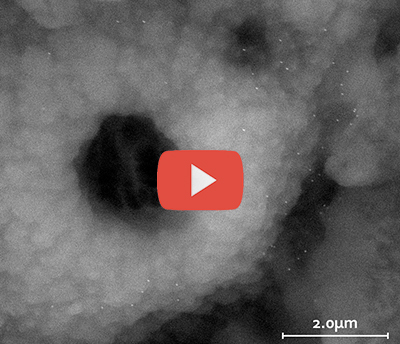Understanding the structural and chemical properties of particles in the atmosphere is critical because of their health effects and their influence on the earth’s radiative situation, and hence on our climate. In this respect, advanced electron microscopy plays a key role for studying particle composition, chemistry, morphology, phase and internal structure.
Environmental Analysis
How can we help you?
• Material Identification of Organics and Inorganics via X-Ray-, Raman and Infrared Spectroscopy
• Automated Particle Analysis (Particle Size Distribution, Identification of Impurities)
• Morphological Studies (e.g. Agglomerations, …)
• Defect Analysis, Quality Control
• In situ Experiments (Wetting, Tensile Testing, Heating, Cooling)
• 3D Reconstruction
Your Contact Details

Dr. Mag. Manfred Nachtnebel
Key-Account-Manager –
Umweltanalyse/Bausektor
Tel. +43 316 873-8831
Contact me

Ing. Hartmuth Schröttner
Gruppenleiter REM/IR/Raman
Tel. +43 316 873-8349
Contact me
Immunogold-labelled SEM analysis
of allergens
In the last decades, the number of people with allergies against at least one of the major allergens like birch, grass, ragweed pollen, or domestic cat has been steadily increasing. An advanced method to localise specific proteins which are responsible for an allergic reaction is immunogold (scanning) electron microscopy.
SEM image of a part of a birch pollen labelled against bet v1 (major allergen of pollen; bright dots are the positions of allergens).
SEM analysis of aerosol particles
High resolution scanning electron microscopy (SEM) contributes to a better understanding and is the solution for many problems in environmental research, earth sciences and volcanology. The morphology and the chemical composition of aerosol particles considerable influence the climate, environment or health, hence our everyday life.
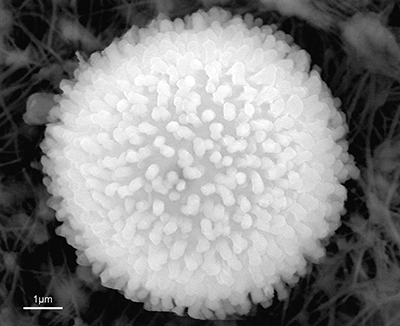
Detailed morphology SEM image of an aerosol, deposited on a fine dust filter
TEM analysis of diesel exhaust particles
Diesel particulate emissions are a major source of fine and ultrafine atmospheric particles. These particles are of great interest because of their unfavourable health effects and their impact on the earth’s atmosphere. Since diesel particles are structurally complex, a detailed knowledge of their size, morphology and chemistry is needed which can extensivly be achieved via TEM analyses.
TEM analysis of asbestos fibres
Rough asbestos measurements are performed in the light microscope, but the unambigous identification of asbestos fibres is extensivly possible by means of transmission electron microscopy (TEM), electron diffraction (SAED) and X-ray spectroscopy.
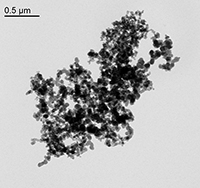
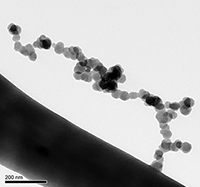

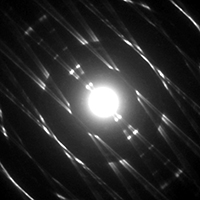
TEM images of diesel particle reveal the complex internal structure.
Left image shows a TEM image of asbestos fibres with the corresponding diffraction image at the right side.

